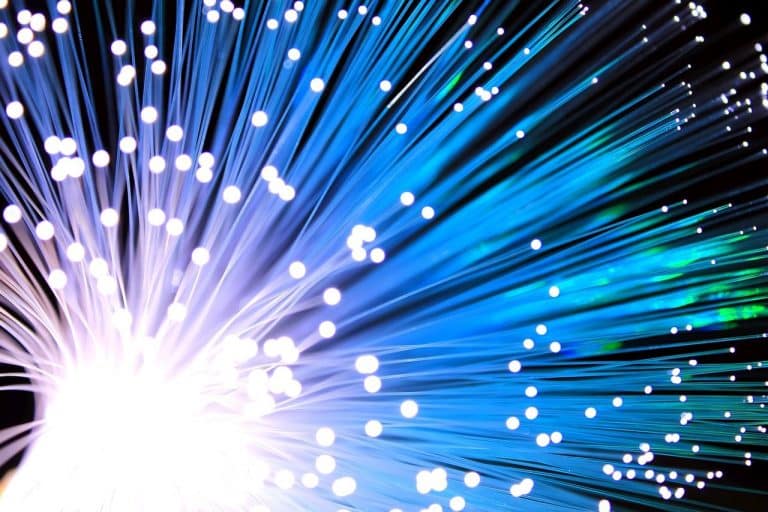Ethernet was defined as protocol 802.3 in technical terms by the Electrical and Electronics Engineers Institute (IEEE). But it’s much easier to say “Ethernet” and it’s probably how you got to know this vital Internet provider.
Aside from jargon, Ethernet refers merely to the most frequently used type of local area network (LAN). A networking network of computers in a small area like your office, college campus, and even home is a LAN — as opposed to a WAN (Wide Area Network), which covers a larger geographical area. If you read it, you might even be linked with him.
Wireless is not what Ethernet is, anyway. You might ask yourself: is there still room for this rectangular Ethernet port on your laptop in a world in which the WIFI seems to govern our linked lives? The response is “yes,” from serious business folks to serious gamers.
Contents
Ethernet: Speeds, Cables, and Setup
Since the Ethernet kicks from the early 1970s, conventional Ethernet speeds have only clocked at 10 Megabits per second (Mbps). Fast Ethernet finally bumped data up to 100 Mbps, but today’s Gigabit Ethernet can support speeds of up to 1,000 Mbps following enormous technological advancements. While it is currently restricted to technology companies, 10 Gigabit Ethernet is also on the road with speeds up to 10,000 Mbps.
The type of cable you use is important as a wired protocol. You can usually see Ethernet wires of category 5 (or CAT5). They are compatible both with conventional and fast Ethernet wires, though Gigabit and 10 Gigabit ethernet can be used by category 5e and category 6 cable (CAT5e and CAT6).
These wires run from your modem or modem-router combo online devices, such as computers, laptops, or SmartTVs, to the Ethernet ports. If the Ethernet port of your device is not built-in, a USB-to-Ethernet adjustment may be possible.
Ethernet vs. Wi-Fi: Advantages
Signal Stability:
When it comes to creating a wired LAN it is a little more expensive and time-consuming than a wireless network (Wireless Local Area Network). The first thing to do is distribute Wi-Fi signals over radio frequencies. You know that radio waves are prone to interference if you have ever passed by the tunnel listening to your car radio and received your neighbor’s signal using your stereo. Your Wi-Fi is like that.
Interference is not a problem with wired Ethernet. And because anything from the Wi-Fi signals your neighbor can interfere with your microwave and Bluetooth headset, this is potentially very good. Without interference, your Internet will be less likely to be slowed, disconnected, or intermitted when it transfers large media files that are thirsty for data to a customer (or competing in a Call of Duty tournament).
Likewise, you do not have to divide bandwidth between your port and PS4 because of your own walls and because each device is hardwired.
Flexibility and Security:
Even though you have to deal with wires, you still have the flexibility to transfer data from your modem or router up to 100 meters (328 feet) through Ethernet cables. Because most routers already have Ethernet ports, you can not do so much to switch your phone and tablet to your Wi-Fi signal or even hardwire your console or desktop gaming rig.
The control and security provided by Ethernet for business-oriented people are difficult to overcome. You should control who is linked at any time by a physical connection to your local network. Not only does this release data for your customers, but it also prevents unwanted security breaches (not to mention risky and costly). The WLAN network of your company is more affordable to prospective threats, of course with WIFI expanding beyond the walls of your bureau.
Ethernet vs. Wi-Fi: Disadvantages
Wi-Fi is well-established and reputed for simple accessibility. Using Wi-Fi essentially means you need only a cost-effective combo of modem routers and your devices are ready to roll.
Cost/Fee:
On the other hand, the larger and more intricate your wired LAN, the greater your costs. You only look at the price of just one cable when you easily run an Ethernet cable to your Xbox One. But you’ll need to have modems, firewalls, routers, switches, and even professional installation if you are a small business that has a secure, stable, and private network. As each workstation accessing your network increases costs, you may be seeing a substantial initial investment.
Ports Availability:
Do you remember previously discussed the USB-to-Ethernet adapter? This is still a consideration. Many do not have Ethernet ports, although most desktops, notebooks, smart TVs, consoles, and intelligent blu-ray players are equipped with them. This will differ even for gamers, as the Xbox One is equipped with an Ethernet port while for example, the Wii U needs a USB-enabled Wii-LAN adapter.
Mobility:
You will lose mobility if you go on Ethernet, too, since mobile devices like smartphones, tablets, and netbooks are WiFi only (it is hard to include an Ethernet port if the port itself is bigger than so many). This way, you will lose mobility if you go on Ethernet. That’s why most LAN settings include some kind of Wi-Fi. And if it’s your game that is fast, Wi-Fi and Tri-Band standard 802,11ac supports a maximum of 1.3 gigabits per second (Gbps) top speed – even though both Wi-Fi and Ethernet theoretical speeds are limited by real-world questions, such as your Data Plan with your internet service provider.

